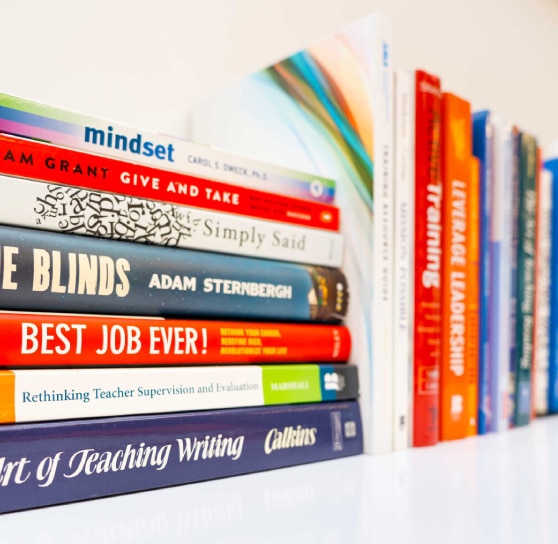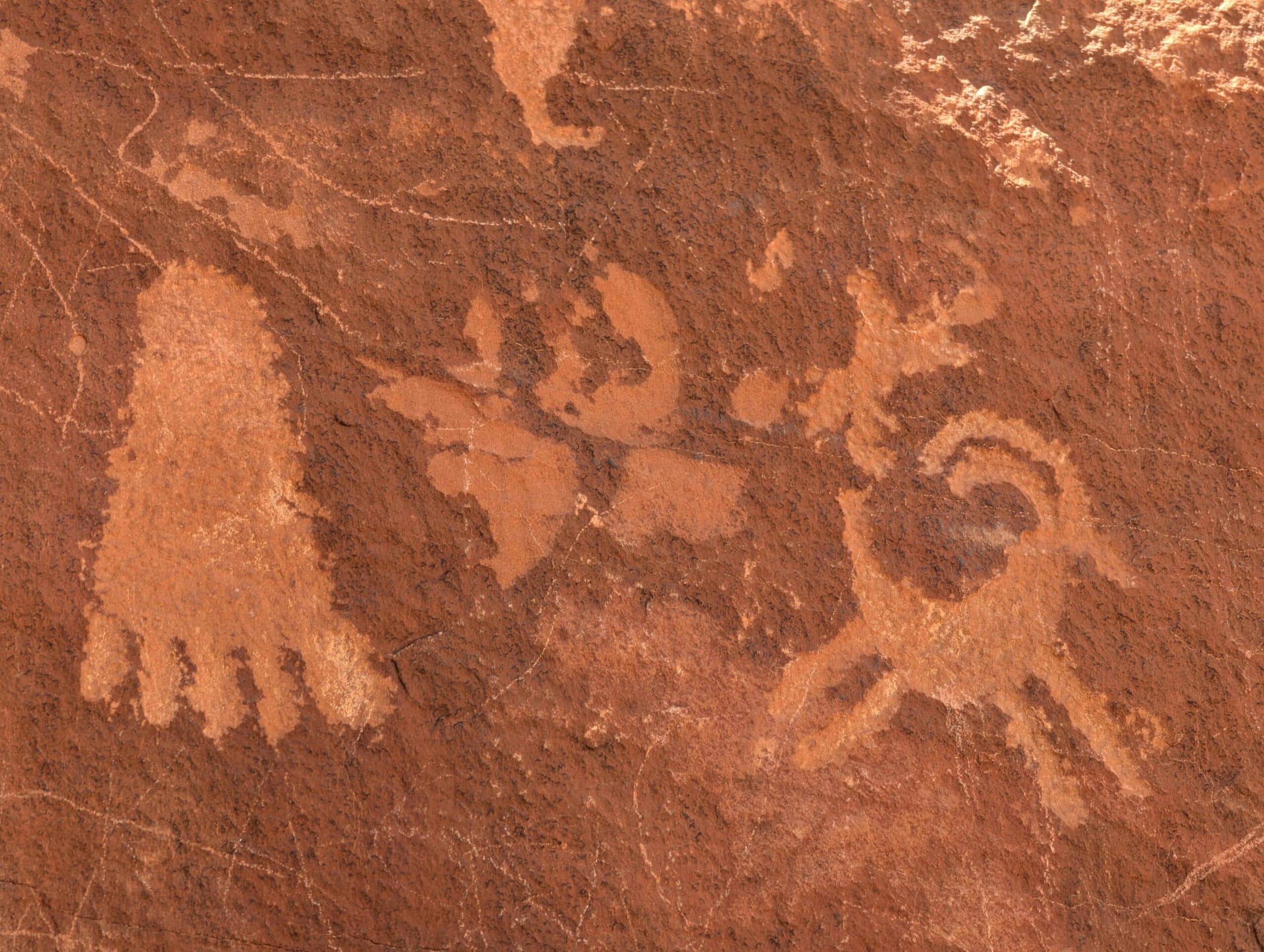


We believe that scholars need a base of knowledge, often referred to as “core knowledge,” to learn and explore topics at a more sophisticated level. For example, studying the Bible and Greek mythology provides a context for understanding the history of Western art.
Developing a wealth of knowledge about history and the world outside their everyday experiences is critical for kids. It allows them to examine different perspectives, explore various parts of the world, and develop a strong historical background. A lack of exposure to history impedes kids’ ability to
grow their knowledge base. If kids never learn about the Founding Fathers and the key debates of the Revolutionary War, it is very difficult for them to understand the Civil War.
At Success, we build scholars’ core knowledge primarily through reading (which is why it is imperative that your kids read voraciously at home and at school), but we also address them through deliberate efforts to give our scholars quick hits of background knowledge, through what we call core knowledge units.
The Middle Ages created a legacy of cultural, architectural, and social achievements whose impact is still felt today—from architecture to the feudal system. A rich cornerstone of history and community, medieval culture will inspire scholars to continue reading and learning about history.
In this unit, your job is to fuel scholars’ excitement for medieval culture, to help them become better readers and researchers, and to develop their expertise about this time period and the people who lived in it.
If you do your job well, your scholars will understand:
As in all reading units, your job as a teacher is to ensure that your scholars are reading at home and at school. Meet with the parents of any scholars who are not reading at home. If you cannot persuade parents to ensure that their children are doing their homework, you need to manage up to leadership.
It is your responsibility to ensure that ALL your scholars are reading 6 days a week at home!
A Feudal Portrait: Scholars each choose one person from feudal society to depict in a fictional portrait, just like one that would hang in a museum! Each scholar will create a portrait using a medium of her choosing, then write a caption to explain the person’s role in medieval culture.
I’m the King/Queen of My Castle! Scholars will design their very own castles. Using photographs of famous castles for inspiration, scholars will first sketch and then label the parts of their castles, focusing on functionality. Then they’ll bring their castles to life in the blocks room. Each castle will be photographed, and scholars will use index cards to caption the most important features of their creations.
A Day in the Life: Scholars will have the opportunity to reenact a medieval profession of their choosing, including creating an artifact from their day on the job. Each scholar will then create a
small speech or explanation of his or her artifact. During the museum, they’ll share their artifacts and role-play their jobs, describing what they made, how they made it, and some challenges of this job— all in character!
Some days the focus is on investigating and studying to learn more, while other days center around project work.
Your day might include:
Facilitating meaningful learning through a core knowledge unit is challenging because there are materials to manage and the work is open-ended. But this is the very reason why it is valuable and engaging for our scholars.
Your level of preparation and your clarity of purpose make all the difference. Guard against exploration without rigor! Scholars’ experiences should spark questions and further investigation about the topic.
Museum: The study culminates with an exhibition, or museum, showcasing scholars’ work, and most importantly, all that they’ve learned about medieval culture. This is a great opportunity to get parents invested in their scholars’ academic work.
Before the unit begins, you must plan backwards from your museum. The work scholars do daily will be the crux of the exhibition.
Use project work time to check in with scholars to see that their work demonstrates what they have learned. Is their work accurate? Is it neat and detailed? Does it demonstrate their best effort?
Communicate with families early on about your museum so they can make plans in advance to attend and support it.
Make a plan to prepare scholars to present their museum to visitors, guiding guests on a tour of their projects and clearly demonstrating their excitement and expertise about the topic.
Effective Materials Management: Scholars will work with a variety of materials as they create their projects. Plan how you will manage the materials, but keep the focus on the content! Ask your Art teacher for advice on managing the materials and when working with any unfamiliar medium.
Scholars will use core knowledge journals and folders for their research and writing. Prepare these beforehand, making them special and exciting for scholars to use.
You will need lots of space! Make sure you have a plan for how to use your classroom, including wall space within and outside your four walls, to display scholar work and a core knowledge word wall.
What are the key characteristics of the Middle Ages in Europe?
What were the various roles of people living in feudal societies?
What is a castle, and what are its parts?
Who worked in a castle?
How can we teach people what we’ve learned?
Below is a list of additional Read Alouds not included in the lessons. You can read these with scholars to build their content knowledge.
Read Alouds:
Don’t forget to play some medieval music to set the mood during snack, Independent Reading, and Independent Writing!
What Does Success Look Like?
What are the key characteristics of the Middle Ages in Europe?
Success is when scholars are able to articulate basic facts about medieval life in Europe and to develop questions about this topic.
Day 1
Engage: 1 minute
Get scholars excited to dive into a new topic by telling them that they’ll soon become experts on a time when knights and maidens roamed the land, people lived in villages centered around castles, and there were feasts every week!
Launch: 5–7 minutes
Virtual Field Study: 10–15 minutes
Read to Learn: 15 minutes
Writing/Targeted Teaching Time: 30 minutes
Independent Reading/Targeted Teaching Time: 30 minutes
What Does Success Look Like?
What are the key characteristics of the Middle Ages in Europe?
Success is when scholars understand how feudal societies were structured.
Day 2
Engage: 1 minute
Tell scholars that today they’re going to learn all about how society worked in the Middle Ages. From the king down to peasants, they’ll learn about everyone’s places in their communities.
Launch: 5–7 minutes
Read to Learn: 15 minutes
Writing/Targeted Teaching Time: 30 minutes
Read to Learn: 30 minutes
Independent Reading/Targeted Teaching Time: 30 minutes
What Does Success Look Like?
What are the key characteristics of the Middle Ages in Europe?
Success is when scholars understand what daily life was like during the Middle Ages.
Day 3
Engage: 1 minute
Show scholars the photographs on pages 42-43 of Castle (Eyewitness), telling them that this was the type of food that people in medieval times ate. Have them turn and talk to guess what the various foods and containers are.
Virtual Field Study: 10 minutes
Read to Learn: 15 minutes
Writing/Targeted Teaching Time: 30 minutes
Read to Learn: 30 minutes
Independent Reading/Targeted Teaching Time: 30 minutes
What Does Success Look Like?
What are the key characteristics of the Middle Ages in Europe?
Success is when scholars understand what daily life was like during the Middle Ages.
Day 4
Engage: 1 minute
Remind scholars that today they’ll continue learning all about the food in the Middle Ages, discovering meals fit for a king or queen!
Read to Learn: 15 minutes
Launch: 5–7 minutes
Writing/Targeted Teaching Time: 30 minutes
Independent Reading/Targeted Teaching Time: 30 minutes
What Does Success Look Like?
What were the various roles of people living in feudal societies?
Success is when scholars understand the roles of kings and queens in medieval society.
Day 5
Engage: 1 minute
Engage scholars by telling them they’ll be learning about all the groups that make up a feudal society—starting with kings and queens!
Read to Learn: 15 minutes
Launch: 5–7 minutes
Writing/Targeted Teaching Time: 30 minutes
Read to Learn: 15 minutes
Independent Reading/Targeted Teaching Time: 30 minutes
What Does Success Look Like?
What were the various roles of people living in feudal societies?
Success is when scholars understand the roles of ladies and lords in medieval society.
Day 6
Engage: 1 minute
Get scholars excited to learn about ladies and lords by showing them the photographs on page 47 and page 49 of Castles (Eyewitness), pointing out that these are the clothes that ladies and lords would wear.
Read to Learn: 15 minutes
Launch: 5–7 minutes
Writing/Targeted Teaching Time: 30 minutes
Independent Reading/Targeted Teaching Time: 30 minutes
What Does Success Look Like?
What were the various roles of people living in feudal societies?
Success is when scholars understand the roles of peasants and serfs in medieval society.
Day 7
Engage: 1 minute
Get scholars excited to learn about peasants and serfs by comparing the photograph they saw of a lord on page 49 of Castles (Eyewitness) with that of a serf on page 53.
Read to Learn: 15 minutes
Launch: 5–7 minutes
Writing/Targeted Teaching Time: 30 minutes
Read to Learn: 15 minutes
Project Time: 30 minutes
A Feudal Portrait
Independent Reading/Targeted Teaching Time: 30 minutes
What Does Success Look Like?
What were the various roles of people living in feudal societies?
Success is when scholars understand how people’s positions in society shaped their lives and what was expected of them.
Day 8
Engage: 1 minute
Launch: 5–7 minutes
Project Work: 45 minutes
A Feudal Portrait
Independent Reading/Targeted Teaching Time: 30 minutes
What Does Success Look Like?
What is a castle, and what are its parts?
Success is when scholars understand the designs and functions of castles.
Day 9
Engage: 1 minute
Launch: 5–7 minutes
Read to Learn: 15 minutes
Writing/Targeted Teaching Time: 30 minutes
Independent Reading/Targeted Teaching Time: 30 minutes
What Does Success Look Like?
What is a castle, and what are its parts?
Success is when scholars are able to describe each part of a castle and its importance.
Day 10
Engage: 1 minute
Show scholars the picture on page 9 of Cross-Sections Castle. Ask them what they notice about the parts of the castle in the illustration.
Virtual Field Study: 10 minutes
Read to Learn: 15 minutes
Read to Learn: 30 minutes
Read aloud Look Inside a Castle (start today; finish tomorrow).
Independent Reading/Targeted Teaching Time: 30 minutes
What Does Success Look Like?
What is a castle, and what are its parts?
Success is when scholars understand what happens when castles are attacked.
Day 11
Engage: 1 minute
Show scholars the picture on the bottom of page 34 from Knights and Castles: 100 Facts You Should Know. Get them excited to learn about the different ways intruders tried to take over castles.
Launch: 5–7 minutes
Read to Learn: 5-7 minutes
Writing/Targeted Teaching Time: 30 minutes
Project Work: 70 minutes
I’m the King/Queen of My Castle!
Read to Learn: 30 minutes
Independent Reading/Targeted Teaching Time: 30 minutes
What Does Success Look Like?
What is a castle, and what are its parts?
Success is when scholars can describe how people who lived in castles defended themselves against invaders.
Day 12
Engage: 1 minute
Read to Learn: 15 minutes
Launch: 5–7 minutes
Project Work: 40 minutes
I’m the King/Queen of My Castle!
Independent Reading/Targeted Teaching Time: 30 minutes
What Does Success Look Like?
Who worked in a castle?
Success is when scholars understand the jobs people performed within the castle walls.
Day 13
Engage: 1 minute
Get scholars excited to learn about the various people who lived, worked, and had fun in castles by displaying pages 24–25 of Everything Castles under the ELMO. Have scholars look over each illustration to guess who’s who.
Read to Learn: 15 minutes
Launch: 5–7 minutes
Writing/Targeted Teaching Time: 30 minutes
Read to Learn: 30 minutes
Independent Reading/Targeted Teaching Time: 30 minutes
What Does Success Look Like?
Who worked in a castle?
Success is when scholars can describe each castle job and its importance.
Day 14
Engage: 1 minute
Show scholars pages 26–27 of Arms & Armour (Eyewitness) under the ELMO. Ask them to guess which castle job they’ll be learning more about today.
Read to Learn: 15 minutes
Writing/Targeted Teaching Time: 30 minutes
Project Time: 30 minutes
A Day in the Life
Independent Reading/Targeted Teaching Time: 30 minutes
What Does Success Look Like?
Who worked in a castle?
Success is when scholars can describe each castle job and its importance.
Day 15
Engage: 1 minute
Tell scholars that today they’ll get to pretend they’re back in the Middle Ages and select a job that interests them, then perform those duties!
Launch: 5–7 minutes
Remind scholars that yesterday they chose which medieval profession they want to try, and today they’ll get to gather their materials and live a day in that life!
Project Work: 70 minutes
A Day in the Life
Read to Learn: 30 minutes
Independent Reading/Targeted Teaching Time:30 minutes
What Does Success Look Like?
How can we teach others what we’ve learned?
Success is when scholars are able to teach others key information about the Middle Ages.
Days 16-18
Engage: 1 minute
Launch: 5-7 minutes
Project Work: 60 minutes
Read to Learn: 30 minutes
Independent Reading/Targeted Teaching Time: 30 minutes
Congratulations! You’ve reached the end of Unit 7: Medieval Times!
As a result of teaching this unit, you, as the teacher, have:
Your scholars can:
Celebrate your scholars’ successes by acknowledging what they can now do as readers as a result of their work over the past several weeks. For example, scholars can now synthesize multiple details in nonfiction texts to form a big idea about what the author is teaching.
Invite scholars to share what was most intriguing to them over the course of the study—and what they’re going to keep investigating on their own!
Reflect on your successes and stretches, as well as those of your scholars. Look at your F&P results. Have your scholars grown as readers over the past month? Enlist parents to help get scholars over this hump!
Scholars must read at home, as well as in school. Are 100% of your kids reading 6 days a week at home? Make sure at-home reading is happening, and meet with families who are falling short to recommit them to this team effort.
Are 100% of your kids reading fluently? Are they using all the tools at their disposal to figure out the meaning of what they are reading?
Are 100% of your kids doing their literacy homework?
Going into the summer, make specific reading goals for scholars. Set a goal for children who are not reading at home. Whom will you get to consistently read at home? Set a goal for moving any scholars who are stuck. Why are they stuck? Do they read most or all words correctly? What is their struggle with decoding? Do they understand what they’re reading? Do they understand the big idea? How will you partner with parents to support their growth?
If you are having trouble meeting your goals, do not wait until you have NOT succeeded. Consult your colleagues. Consult your leaders. ASK FOR HELP so you can meet your goals!
resources
Access a wide array of articles, webinars, and more, designed to help you help children reach their potential.

ES PBL Grade 2: Brooklyn Bridge
Educator
Curriculum
Elementary School
2nd
PBL

ES PBL Grade 3: Iroquois and Lenape
Educator
Curriculum
Elementary School
3rd
PBL

Grade 1: PBL School – How It Works!
Educator
Curriculum
Elementary School
1st
PBL

Grade 4: PBL A Nation is Born
Educator
Curriculum
Elementary School
4th
PBL
NEWSLETTER
"*" indicates required fields
